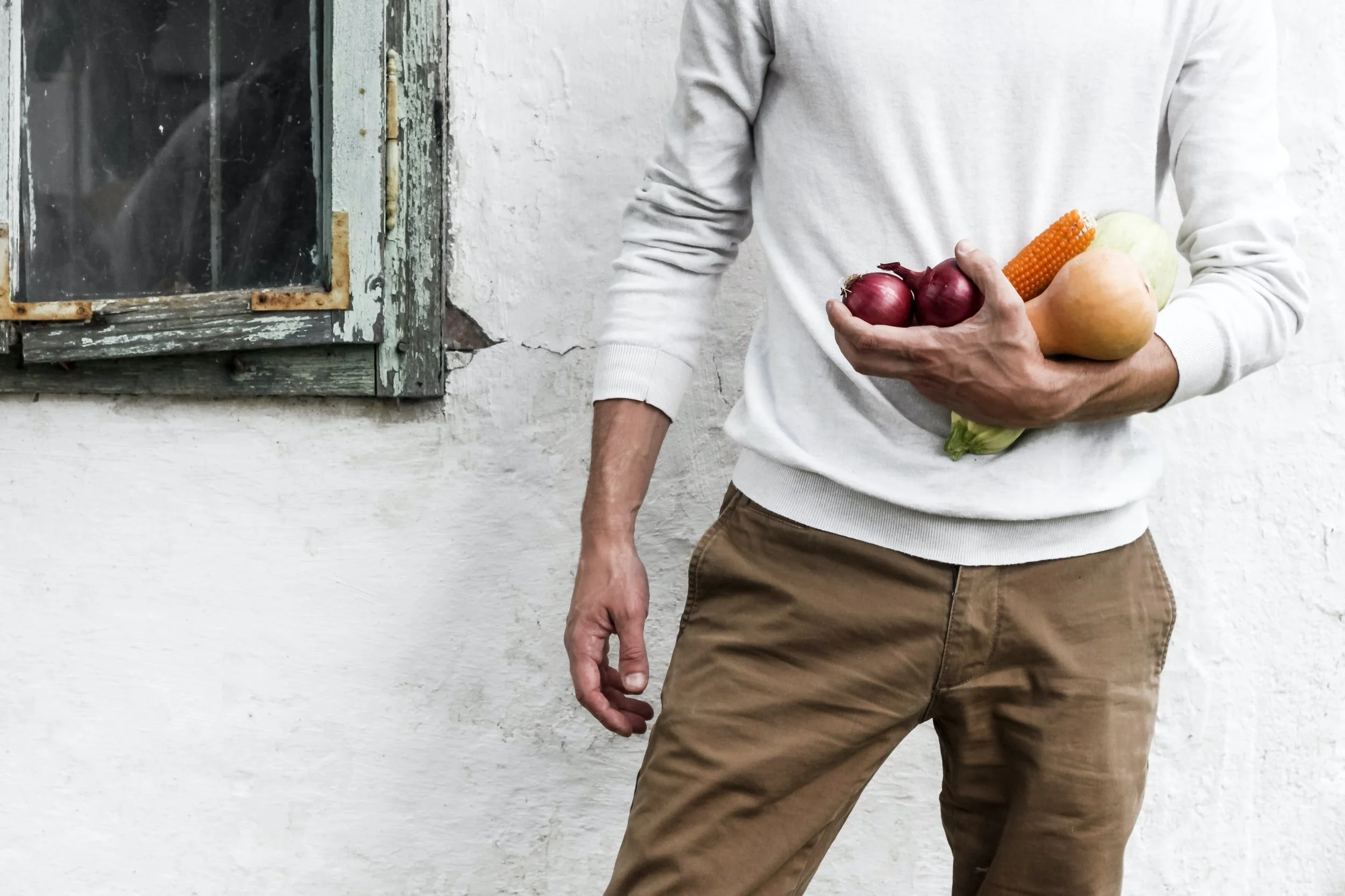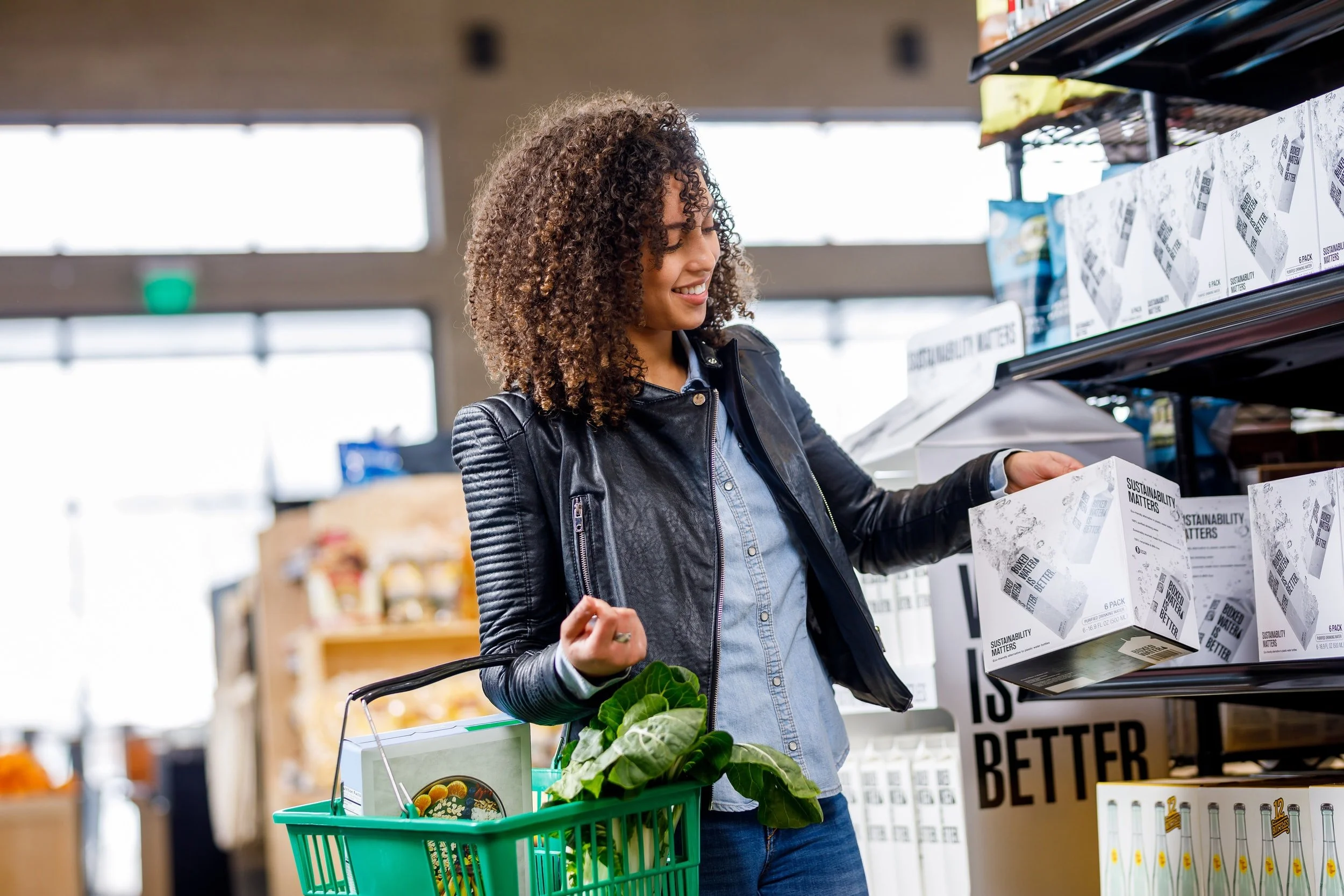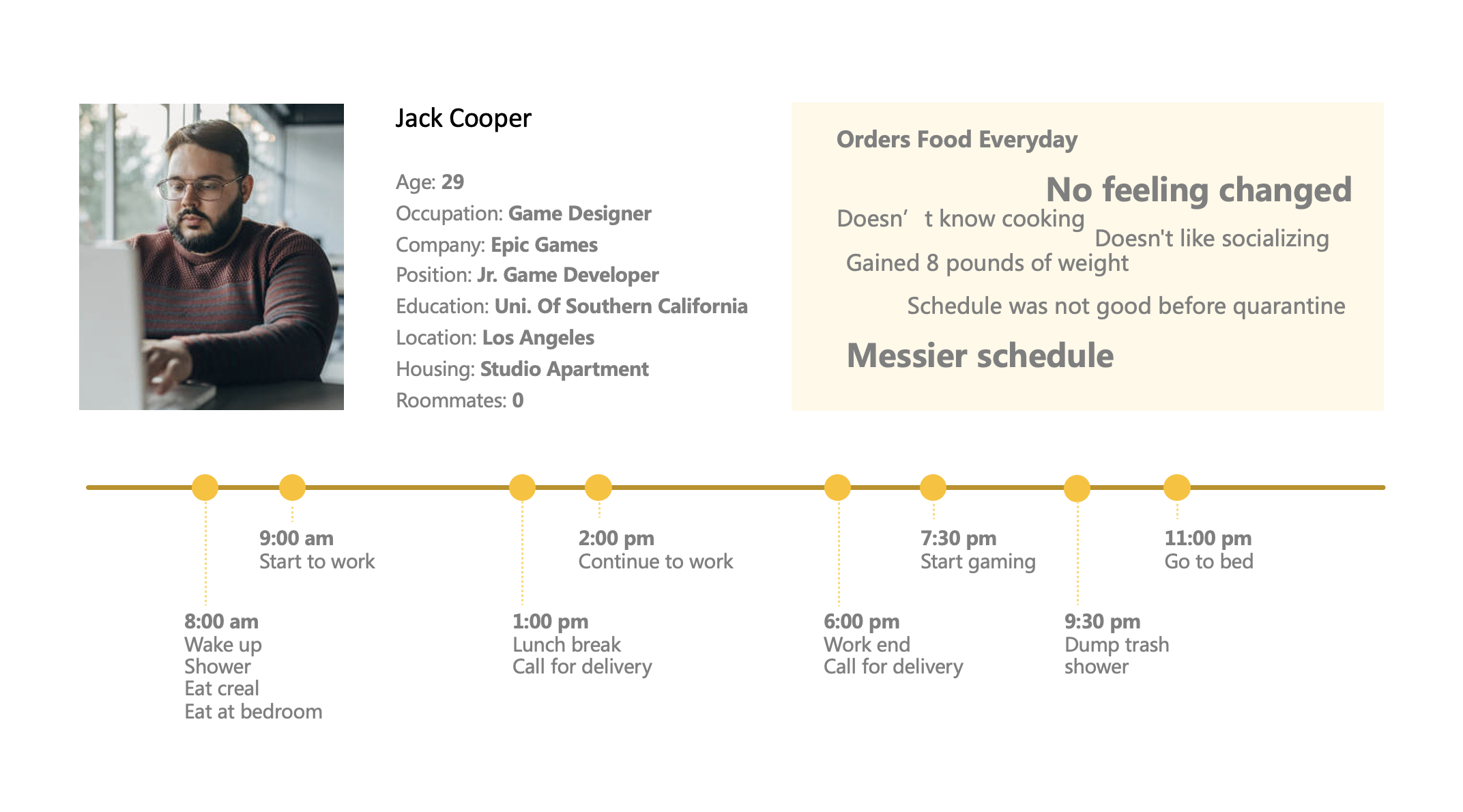Contextual Research of Diet in Isolation
Project One
The goal of this research was to observe people’s diet, feelings, and situations during the COVID-19 pandemic to find out the influence of quarantine on diet aspect. We observed how self-quarantine makes people’s diet change? And what kind of lifestyle and diet is healthy during quarantine.

Problem
During COVID-19 pandemic, people have to self-quarantine for protecting their lives. Until April 28th, more than a third of the planet's population is under some form of restriction. From CDC, self-quarantine means a person is asked to stay in a separate room from other people in their homes and use a separate bathroom. Which means more than a third of people’s life was affected.
The data from Uber eats shows people eating more and unhealthier during self-quarantine in the last one month. At the same time, quarantine means people cannot go out to exercise.
In addition, the sales of alcohol and cannabis spiked in the past few weeks. It clearly shows that isolation has affected people’s lifestyles and diet.
Opportunity
During the pandemic of COVID-19, people's diet may be affected by different lifestyles, which might further affect people's health. We hope that, through the study of people's diet in this special period, we can identify changes and factors that cause the differences. Then we could have an opportunity, using the finding from our research, to find a way of improving people’s happiness and health.
Facts On Quarantine
Stakeholders Map
AEIOU Observations
Affinity Diagram
Primary Research
• 72 Survey Respondents
• 13 Personal Interviews
94.1 % of People buy Groceries in the Market
35.3 % of People Eat Alone
Primary Research Findings
Comparison of Meals: Before and During Quarantine
Even though most people still eat 2 or 3 meals per day, the proportion of people eating two meals increases from 44.1% to 55.9%. One meal and four more both show an increasing trend. Almost half of the people believe that eating at a fixed time every day is healthier than eating when hungry.
47.1 % of People have no experience of Buying Groceries Online
Main Places for People to Eat
-

Kitchen
29.4% of People eat in the Kitchen
-

Bedroom
36.8% of People eat in the Bedroom
-

Dining Room
36.8% of People eat in the Dining Room
Effects on Weight
Before and During Quarantine
Weight Gained
28.5 % of People Gained Weight During Quarantine
Maintained Weight
48.9% of People Maintained their Weight During Quarantine
Lost their Weight
22.6% of People lost their Weight During Quarantine Due to Diminished appetite
Moods and Diet During Quarantine
People
-
20 to 30 years old people are living with their roommates and most of them cook their food by themselves.
-
• Comfort food Is more popular
• People believe that organic food and vegetables are healthier than regular food
• People believe that eating fast food take-outs is not good for health
• Shelf-stable food is not good for health
-
• Dining habits
• Shopping Patterns
-
• Outdoor activities
• Use of human services
-
• Method of Cooking
• Health
• Diet
• Ingredients & Nutrients
• Schedule
Personas
TEAM
Project Duration: 10 Weeks
From Left to Right
Suhag Amin: Design Researcher & Strategist
Yvonne Hao: Graphics Designer
Haldis Gao: Data Organizer & Strategist
Shuai Ma: Graphics Designer
Fongkim Tang: Design Researcher



















